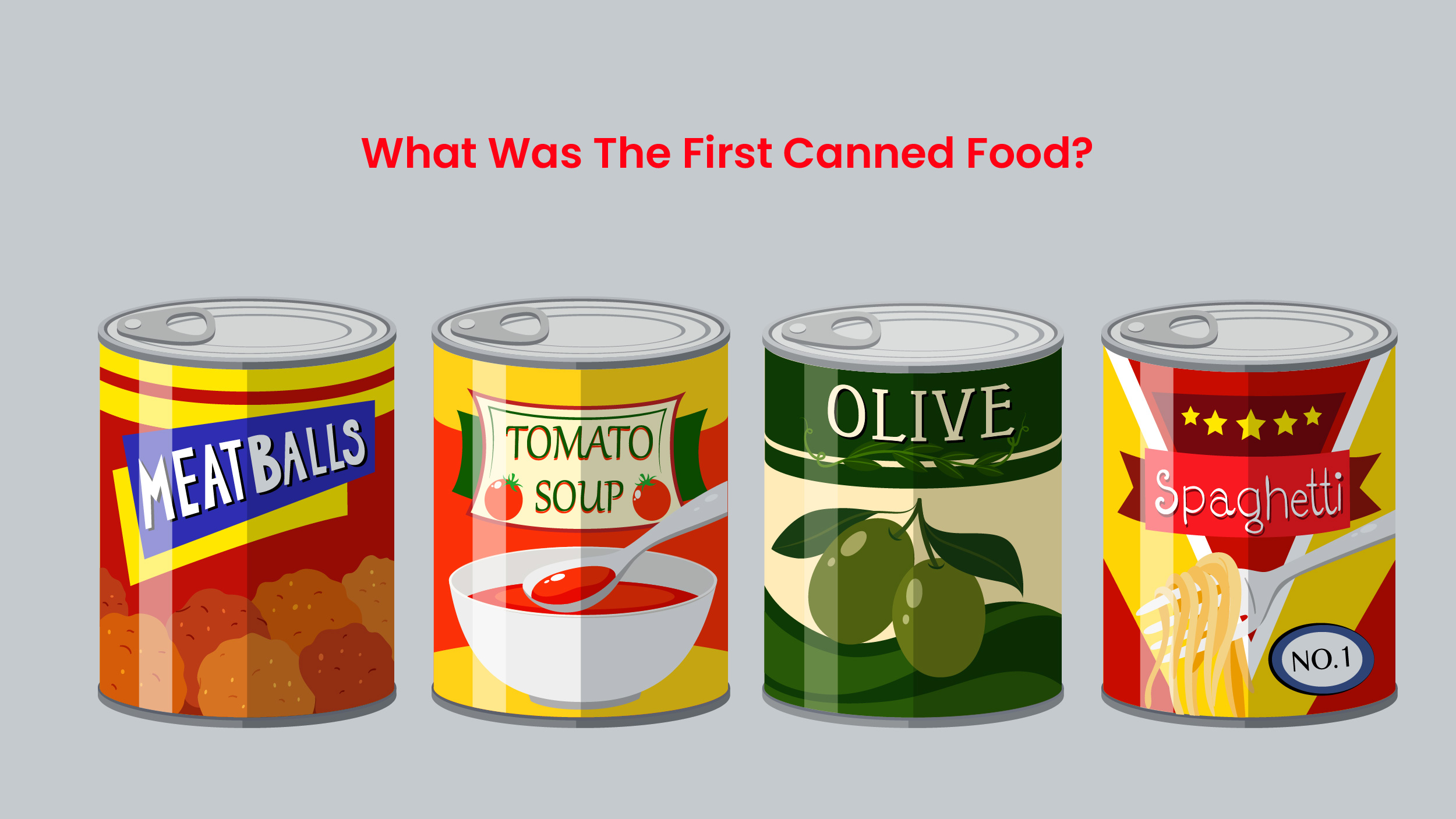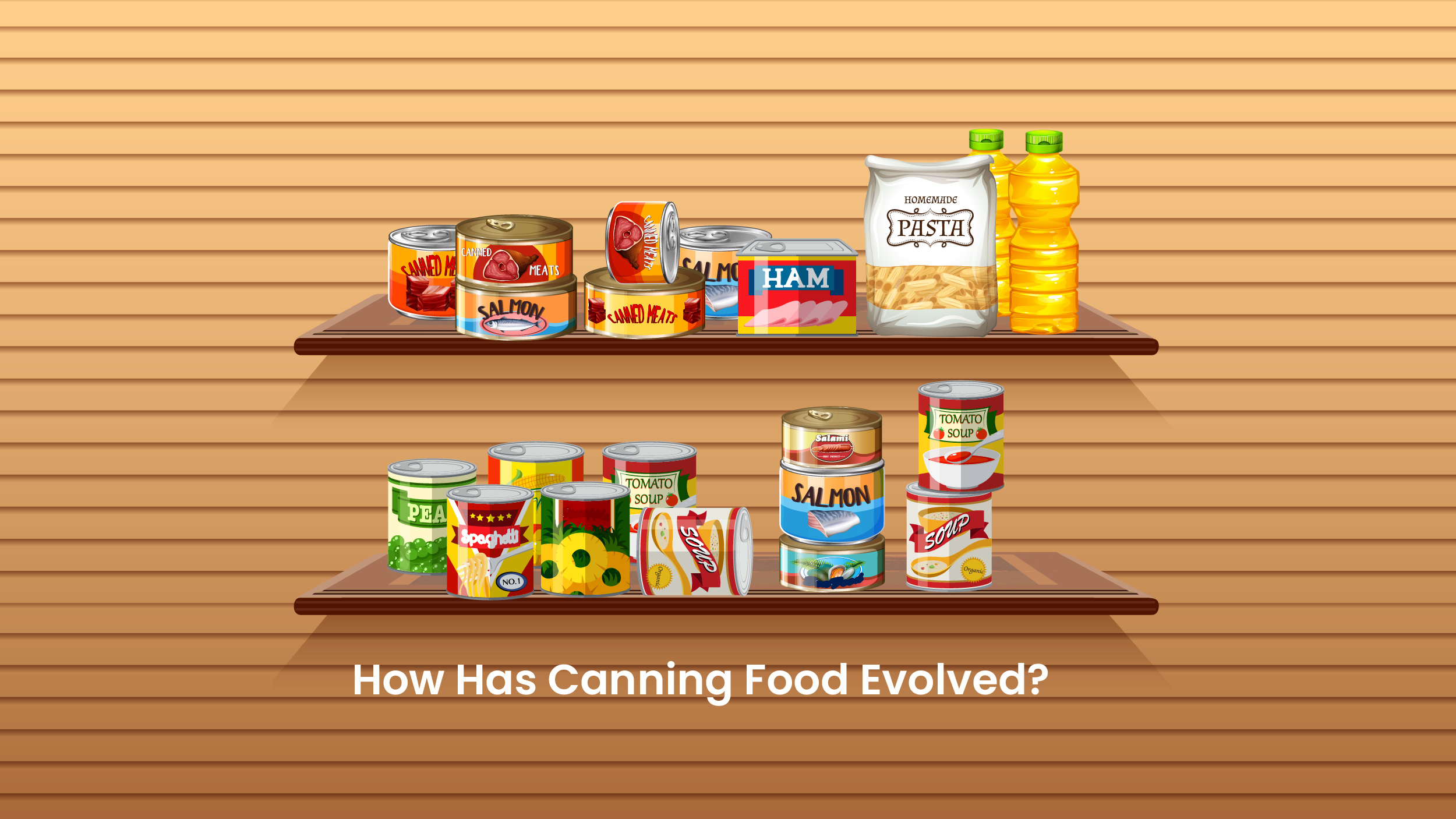Canned food has always been at the brunt of the debate on whether it’s good or bad. Some might prefer to call it just convenient though. At least that’s what Napolean Bonaparte was trying to do!
Canned foods are a core component of the diets of many Americans.
Generally speaking, fresh foods are advised as the main nutrient-dense dietary options, however, due to seasonal, economic, and geographic constraints, not all Americans can always access fresh meals.
Although research in the American Journal of Lifestyle Medicine dispelled that myth and found that canned food has nutrient profiles similar to those of fresh foods, nutrient-dense canned foods should still be regarded as healthy alternatives to fresh foods or as a supplement to them.
So to understand where this is coming from let us get into how canning food came into being and why was it adopted in the first place.
Canned Food History
The canning procedure dates back to the late 18th century in France when Emperor Napoleon Bonaparte offered a financial reward to anyone who could create a dependable technique of food preservation. Napoleon was worried about feeding his army. The concept of keeping food in bottles like wine was developed by Nicholas Appert. After 15 years of research, he discovered that food will not rot provided it is sufficiently cooked and kept in an airtight container.
Bryan Dorkin and John Hall, who established the first industrial canning business in England in 1813, refined a method of sealing food into indestructible tin containers invented by an Englishman named Peter Durand. The need for canned foods increased as more of the world was discovered and as feeding soldiers gained significance.
The first American canning factory for oysters, meats, fruits, and vegetables was built in New York in 1812 by immigrant Thomas Kensett. When Louis Pasteur was able to show that the development of microbes is what causes food spoiling more than 50 years after the invention of canning, he offered an explanation for the efficiency of the process.
This pops out certain questions about canned food and how it all started.
When Was Canned Food Invented Who Invented Canned Food?
The first patent for the concept of utilizing tin cans to preserve food was granted to a British businessman named Peter Durand. On August 25, 1810, King George III of England issued the patent.
What Was The First Canned Food?
In 1825, Thomas Kensett and Ezra Daggert introduced the first canned food to the United States when they sold New Yorkers their patented cans of oysters, fruits, meats, and vegetables. Though, it wasn’t until Gail Bordon’s development of condensed milk in 1856 that canned food became a commercial success in the United States.

When Did Canned Food Become Popular?
Although canned food has its origins in the Napoleonic Wars (1803–1815) and first appeared in American markets in the 1800s, it wasn’t until the 1940s that it truly became a mainstay of the American diet. By creating field rations, companies like Chef Boyardee (formerly Chef Boy-ar-dee) contributed to the Second World War effort.
Though, it wasn’t until Gail Bordon’s discovery of condensed milk in 1856 that canned food became commercially successful in the United States. In cities like New York, milk was expensive and difficult to keep fresh. A growing issue was addressed by Bordon’s Condensed Milk. When the Civil War starts, the demand for milk and canned goods skyrocketed.
At the time, opening canned food remained the only drawback. The only tools needed to open early cans were a hammer, a chisel, or a knife because they were frequently strengthened with harder metals. It takes an American named Ezra J. Warner till 1860 to create the first can opener. It isn’t until the 1920s that a more commercially-friendly opener makes its way into household kitchens. The older, more clumsy opener was still used mostly during the war and by store employees.
As can consumption increased, so did the science and methodology behind safer canning.
How Has Canning Food Evolved?
Since Nicholas Appert and Peter Durand invented the method, the fundamentals of canning have not altered significantly. Foods placed inside sealed containers that are considered to be “airtight” are heated to a temperature that will kill bacteria. The canned foods are then cooked at 240–250°F (116–121°C) under steam pressure.
Each meal has a distinct processing time need depending on its acidity, density, and heat transmission capacity. Tomatoes, for instance, need less time than green beans, although maize and pumpkin take much longer.

To ensure that foods are commercially sanitary while retaining the most flavor and nutrition, processing conditions are chosen to be the bare minimum required. The U.S. Food and Drug Administration must approve all procedures in nations like the USA. Food that has been sealed and heatedly treated remains in excellent eating condition for more than two years and is safe to consume as long as the packaging is undamaged. Moreover, no preservatives are added or required, just like with home canning.
The canning process has a different order of steps depending on the product. Before canning, fruits, and vegetables can be peeled, pitted, and/or had the stems cut off. To remove air and enhance packing, some veggies are heated before being put in the can.
Acidic beverages, such as tomato and orange juice, as well as acidic foods, like sauerkraut, can be sterilized before being put into containers. With the exception of smaller fish like sardines and anchovies, or even salmon, whose bones are softened by boiling, most seafood is packaged after being deboned or shelled. Before canning, meats and fish, like tuna, are typically boiled to soften the flesh. Next, they are deboned, compacted, and put in cans with the right liquid.
Modern canning differs significantly from earlier methods in part because modern cans are made entirely of steel that can be recycled.
Why Buy Canned Products Altogether?
Most canning facilities are situated just a few miles from the point of harvest in order to guarantee that items are packed at their peak freshness. From the fields where the product is collected, canneries for fruits and vegetables are frequently visible. Canneries for seafood are close to the docks. In the same facilities where they are made, meats, soups, and stews are canned. Transport is kept to a minimum to keep prices down and to guarantee that food, particularly fruits, and vegetables, is packed when the flavor is at its best.
Food that is canned is preserved at the time of harvest when nutrients are at their highest levels. Foods start to lose some of their vital nutrients as they get older. When they are at their ripest, fruits and vegetables in particular have the most nutrients. Little, if any, nutrients are wasted in transit because canneries are situated near the point of harvest.
A 1997 University of Illinois study and other more recent research suggest that the canning process may help to improve the nutritious profile of some foods. For instance, 1/2 cup of canned pumpkin contains almost 600% of the recommended daily intake of vitamin A, compared to only 143% in the same amount of raw pumpkin, per the updated Recommended Dietary Allowances (2001).
Some foods, such as canned beans, have more fiber, and canned tomatoes have much more of the vital phytochemical lycopene than fresh tomatoes do. The canning procedure was created to properly store food for a long time. When the food has been placed in a can, it is heated to a high temperature that eradicates all known germs.
Also, utilizing a method known as Hazard Analysis and Critical Control Point, or HACCP, the majority of processed foods are closely supervised. The HACCP system identifies potential contamination locations in the food production process and establishes checkpoints to guarantee that the highest levels of safety are always upheld. The heating process is closely monitored by modern processors, who make sure that the canned food that is sold to consumers is as safe as it can be.
Conclusively
Almost every harvested or processed food can be found in a can. In reality, many items were only available in cans for many years. Although there are more options available to consumers nowadays and canned food is frequently replaced by fresh and frozen options, tinned food is still a necessary component of the modern pantry.




